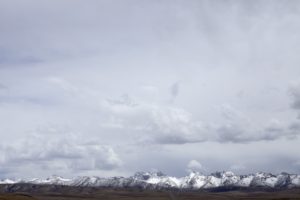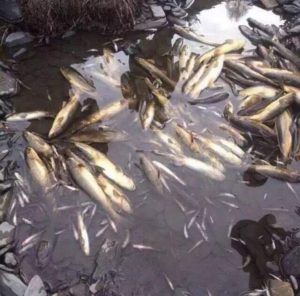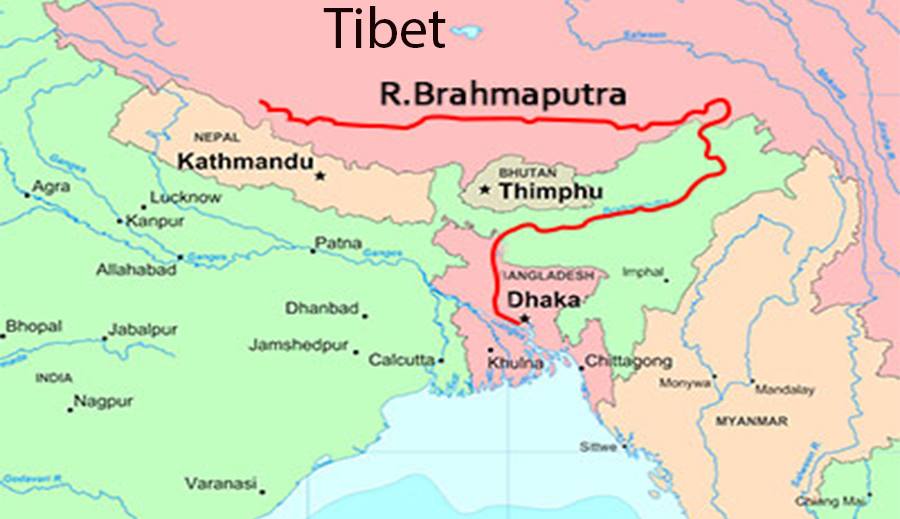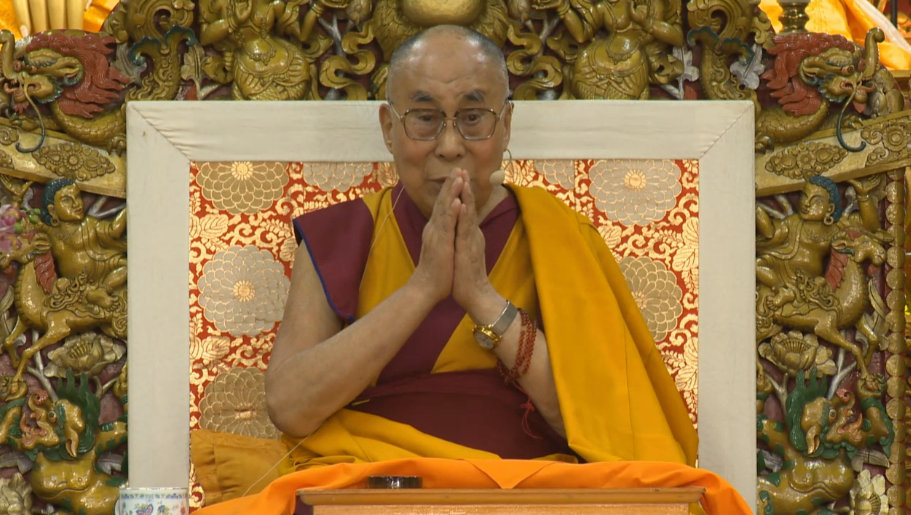Tibetans in anguish as Chinese mines pollute their sacred grasslands
Simon Denyer, The Washington Post | December 26, 2016
JIAJIKA, CHINA — High in western China’s Sichuan province, in the shadow of holy mountains, the Liqi River flows through a lush, grassy valley dotted with grazing yaks, small Tibetan villages and a Buddhist temple. But there’s poison here.
A large lithium mine not only desecrates the sacred grasslands, villagers say, but spawns deadly pollution. This river used to be full of fish. Today, there are hardly any. Hundreds of yaks, the villagers say, have died in the past few years after drinking river water.

China’s thirst for mineral resources — and its desire to exploit the rich deposits under the Tibetan plateau — have spread environmental pollution and anguish for many of the herders whose ancestors lived here for thousands of years.
The land they worship is under assault, and their way of life is threatened without their consent, the herders say.
“Old people, we see the mines and we cry,” a 67-year-old yak herder said, requesting anonymity for fear of retribution. “What are the future generations going to do? How are they going to survive?”
A local environmentalist, who also declined to be named to avoid backlash from the authorities, said he had done an oral survey of local opinion and found that Tibetans would oppose mining projects even if companies promised to share profits with local communities, to fill in mines after they were exhausted, and to return sites to their natural state.
“God is in the mountains and the rivers, these are the places that spirits live,” he said.
“When mining comes and the grassland is dug up, people believe worse disasters will come. It destroys the mountain god.”
‘We just knew they had lied’
It was in 2009 that toxic chemicals from the Ganzizhou Rongda Lithium mine first leaked into the river, locals say, killing their livestock and poisoning the fish.
“The whole river stank, and it was full of dead yaks and dead fish,” said one man downstream in the village of Balang, who declined to be named for fear of retribution.
Another pollution outbreak and a protest by villagers in 2013 forced the government to order production temporarily stopped, locals said.

“Then, during the past few months, officials came to the village to try to persuade people,” the man said. “They said we have to have the mine but promised they would take time to fix the pollution problem before reopening it.”
But in April, just after mining restarted, fish began dying again, locals said. “That’s when we just knew they had lied,” the man said.
In May, residents staged a second protest, scattering dead fish on a road in the nearby town of Tagong. The protesters were surrounded by dozens of baton-wielding riot police. Again the government stepped in, issuing a statement to “solemnly” promise that the plant would not reopen until the “environmental issues” were solved.
But the problem at the Jiajika mine is not an isolated one. Across Tibetan parts of China, protests regularly erupt against mineral extraction, according to a 2015 report by Tibet Watch.
China is focused on copper and gold extraction from Tibet but is also exploiting a whole range of minerals “with increasing intensity,” including chromium, iron, lithium, iron, mercury, uranium and zinc — as well as fossil fuels such as coal, oil and natural gas, the report said.
Although China boasts of its development work in western regions where Tibetans live — hauling millions out of poverty and nearly doubling life expectancy over the past five decades — the report argued that much of the transport and other infrastructure in the region is aimed at extracting minerals rather than benefiting residents. Projects usually import workers from other parts of China, seldom employing Tibetans in significant numbers.
When protests break out, China’s response “has generally been heavy-handed,” with authorities seeking to politicize the protests, Tibet Watch wrote.
Understanding those risks, Tibetan communities sometimes use creative ways to get their message across.

When hundreds of people gathered in August 2013 in Zadoi county in Qinghai province to protest against mining on what they considered to be a holy mountain, they flew Chinese flags to demonstrate their loyalty to the state and erected posters and placards quoting President Xi Jinping’s words on the need to balance economic growth and environmental protection.
It didn’t help. Police and paramilitary forces arrived in large numbers and fired bullets above the crowd, according to campaigners at Free Tibet. The group said eight people were arrested and many more injured.
But as the Zadoi protests show, it doesn’t always take evidence of environmental pollution to awake the locals’ ire.
“God is in the mountains and the rivers, these are the places that spirits live,” said one local environmentalist, who declined to be named to prevent any backlash from the authorities. “When mining comes and the grassland is dug up, people believe worse disasters will come. It destroys the mountain god.”
The environmentalist said he had carried out an oral survey of local opinion and found that Tibetans would oppose mining projects even if companies promised to share profits with local communities, to fill in the mines after it was they were exhausted, and to return the sites to its their natural state.
In the villages outside Xiaosumang township in Qinghai, residents blame a lead and zinc mine for the deterioration of the grasslands for miles around, and even for falling harvests of caterpillar fungus, a highly prized health cure that is the backbone of the local economy.
Contaminated water from the mine, residents said in a joint letter to the authorities in 2010, not only killed their livestock but also caused people who drank it to die of cancer, they said.
“Over the years, many herders would sigh and say: ‘Life can’t go on like this anymore. Even drinking has become a big issue for people living on the grasslands,’ ” the letter said.
A May 2009 protest in the village of Xizha prompted a severe crackdown, the letter said, with guns and tear gas used, seven women severely beaten, and 12 men blindfolded, detained and tortured.
Authorities threatened to cancel poverty-alleviation grants, including income and housing subsidies, if anyone in the region brought up the issue of environmental protection again, the letter said, adding that the crackdown “caused great fear to spread in our hearts.”
Whether the mine is truly the culprit for all the grasslands’ ills is another matter — climate change, for example, is probably an important factor. But that doesn’t soothe local anger.
“When I was young, there was more grass, more flowers, it was really beautiful here,” said a 27-year-old man in a valley downstream from the lead and zinc mine. “Now you see it’s less beautiful every year. People see all this and they are not really sure what happened, so they think it must be the mine.”
A conflict without end
In Jiajika, 300 miles to the southeast, the commercial pressure to reopen the lithium mine is mounting. The element is a vital component in rechargeable batteries used in cars, smartphones, laptops and other electronic and electrical items. Demand — and prices — are skyrocketing.
Last January, Youngy Co. Ltd., the parent company of Ganzizhou Rongda Lithium, promised investors that the local government would step up efforts to reopen the mine March.
That same month, an article in the local Ganzi Daily newspaper outlined the authorities’ dream of making the area “China’s lithium capital,” calling Jiajika the biggest lithium mine in the world with proven reserves of 1.89 million metric tons and even greater potential.

Three companies, including Rongda, will invest 3.4 billion yuan ($510 million) in the site by 2020, the article said.
He Chengkun, Youngy’s media officer, said an official investigation had established that the plant was not responsible for killing fish in 2013 or this year.
“The local government has made it clear it is nothing to do with our company,” he said.
“They are looking into it and have already zoomed in on some suspects.”
He said the plant has been closed since late 2013 because of problems relating to land acquisition and denied that it had restarted operations in April, as locals claimed.
Nevertheless, across the Tibetan plateau, resource extraction, land grabs and environmental destruction remain flash points for conflict between Tibetans and the authorities, said Free Tibet Director Eleanor Byrne-Rosengren, reflecting both local grievances and the wider problem that Tibetans do not have the right to decide what happens to Tibet and its resources.
“Those resources feed the demands of Chinese industry instead of the needs of the Tibetan people,” she said. “That is why their environment is put at risk and their rights are trampled upon, and why we can expect to see this conflict played out repeatedly in the future.”
Xu Yangjingjing contributed to this report.




